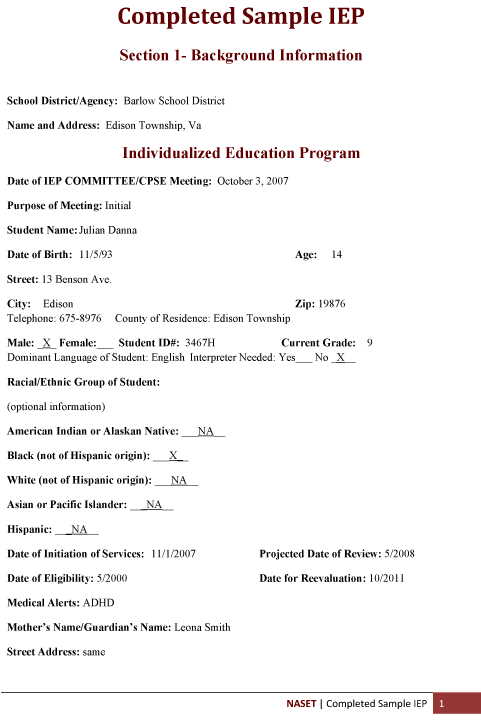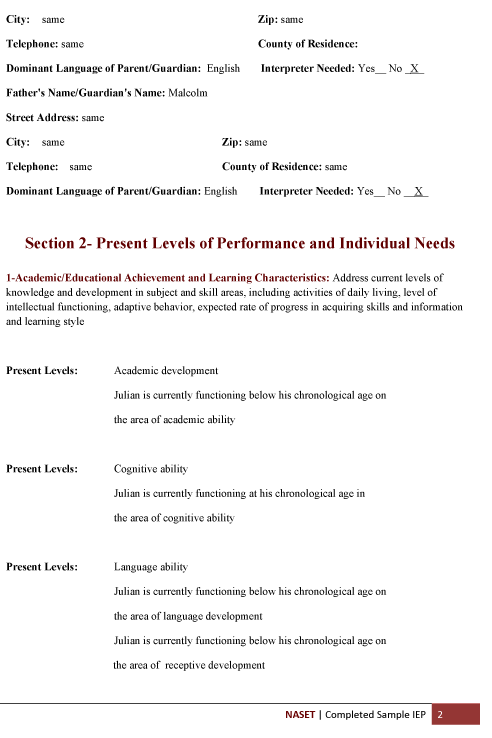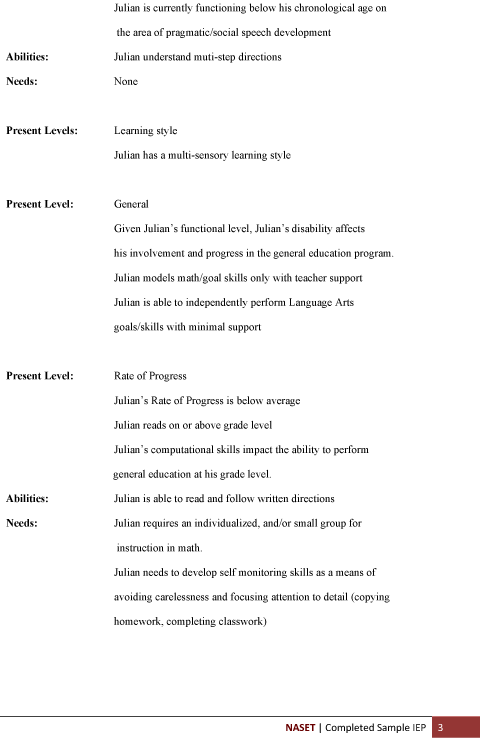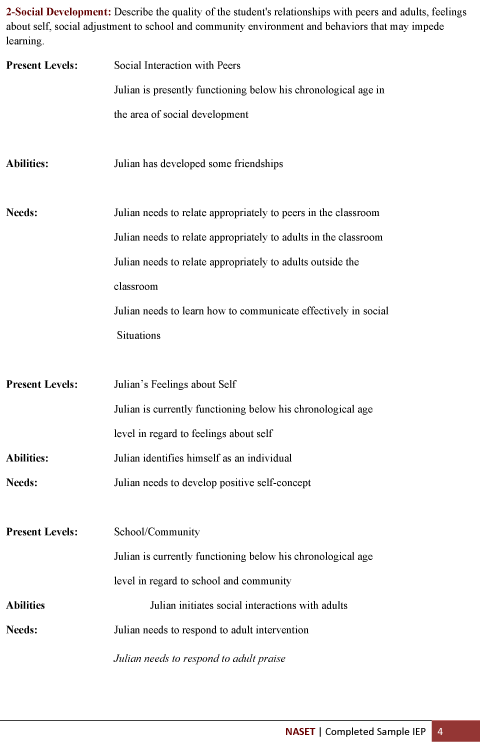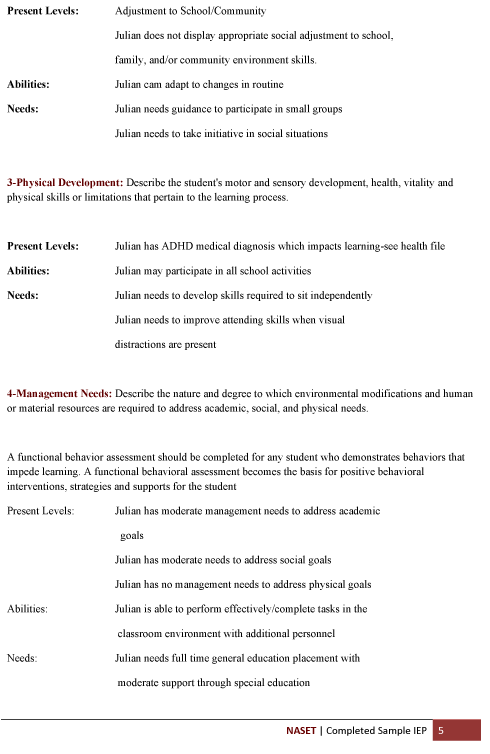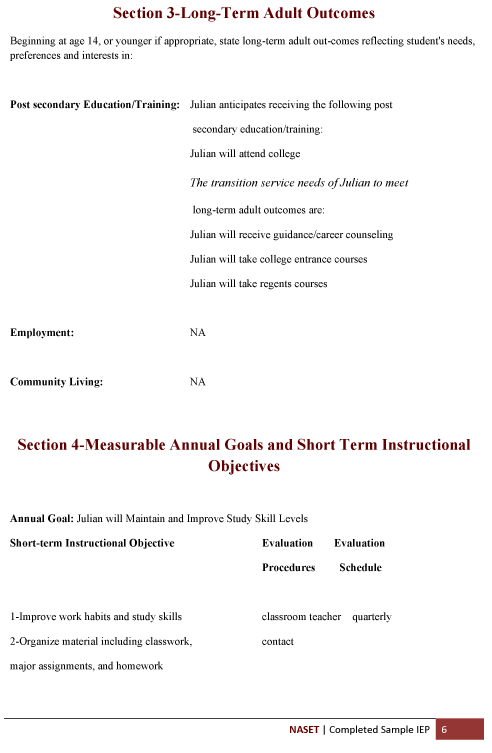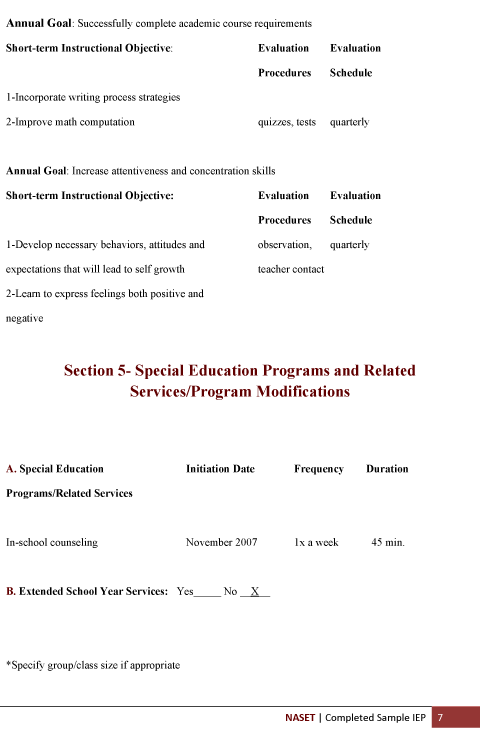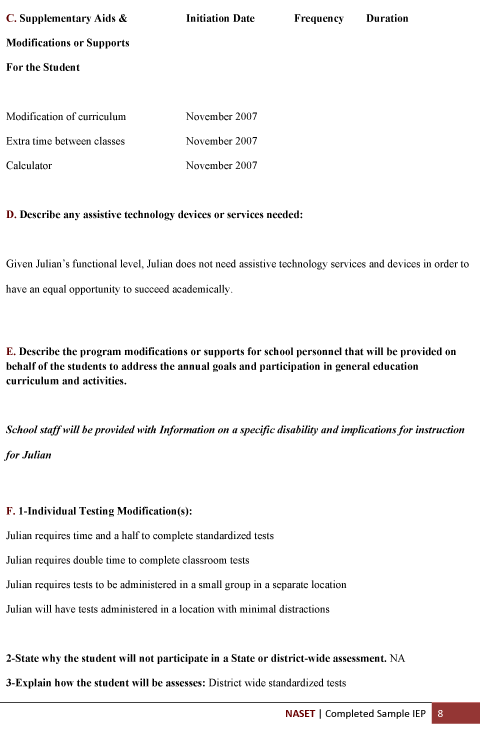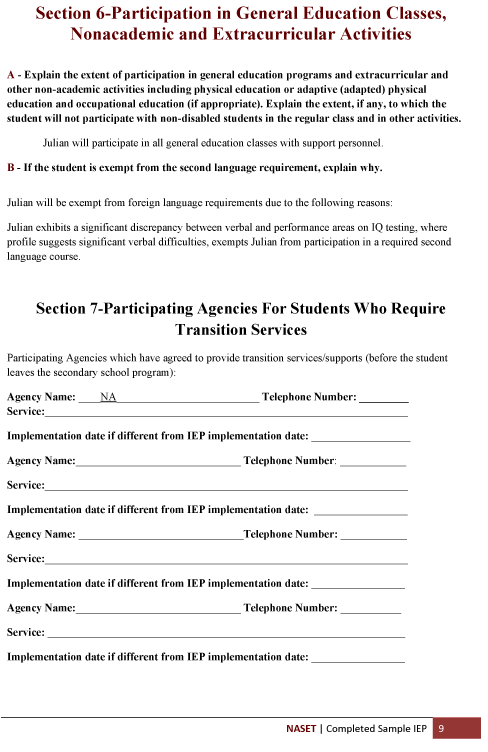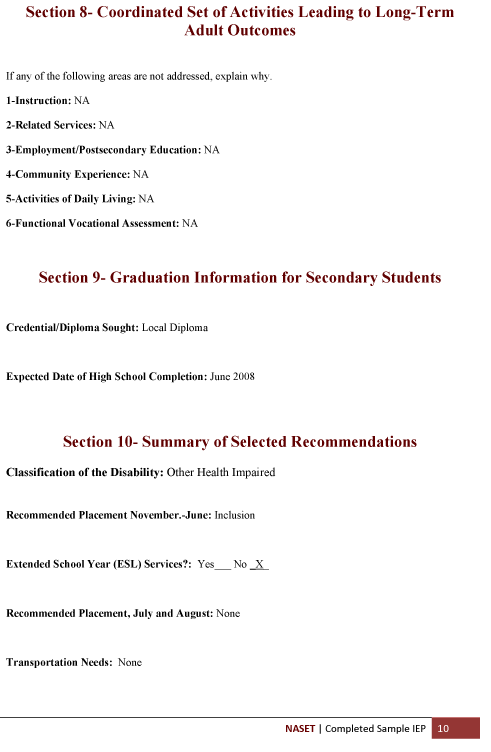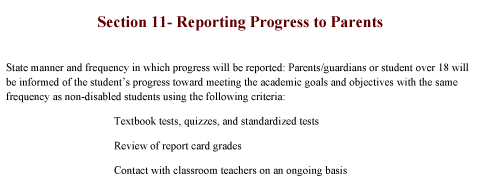IEP (Individual Education Program)
Tables
• Least Restrictive Environment Continuum
• Criteria Used to Recommend Test Modifications
Forms
Tables
Least Restrictive Environment Continuum
The placement of disabled students is the responsibility of the IEP Committee with the input of staff and consent of parents.
In order to accomplish this task the IEP Committee has a variety of placements from which to choose. These placements range in levels of restriction:
- class size
- student teacher ratio
- length of program
- degree of mainstreaming
- number of non-disabled peers
- management restrictions
1. Regular class placement
2. Inclusion Class Placement
3. Regular class placement with consulting teacher assistance
4. Regular class placement with some supportive services – This placement may be used with mildly disabled students who require supportive services but can remain in the regular class for the majority of the day. The services that may be applied to this level include adaptive physical education, speech and language therapy, in school individual or group counseling, physical therapy, occupational therapy etc.
5. Regular class placement with itinerant specialist assistance – Itinerant services
6. Regular class placement with resource room assistance
7. Part-time Mainstreaming while in a self contained class – This placement is for students who need a more restrictive setting for learning, behavioral or intellectual reasons. These students cannot be successful in a full time regular class or with a “pull out” supportive service but can be successfully mainstreamed for a part of the school day. The special education teacher determines the nature of the mainstream experience.
8. Full time special class in a regular school
9. Special day school outside the school district
10. Residential school
11. Hospital or institution
12. Homebound instruction
Download a PDF Version of this Table – CLICK HERE
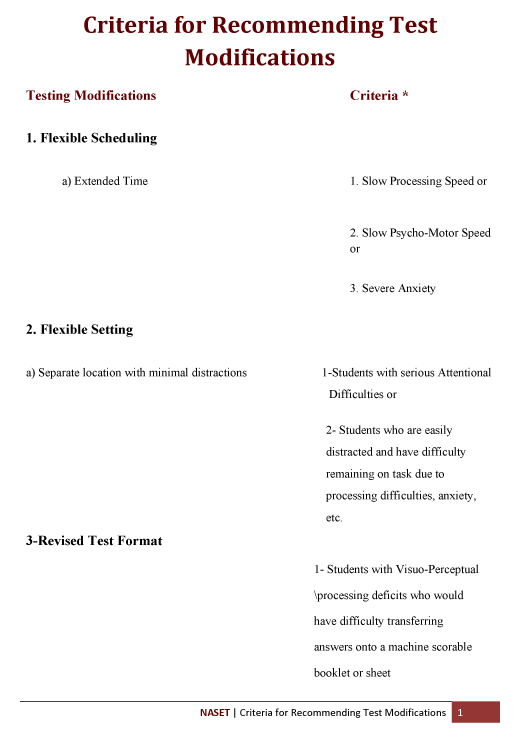

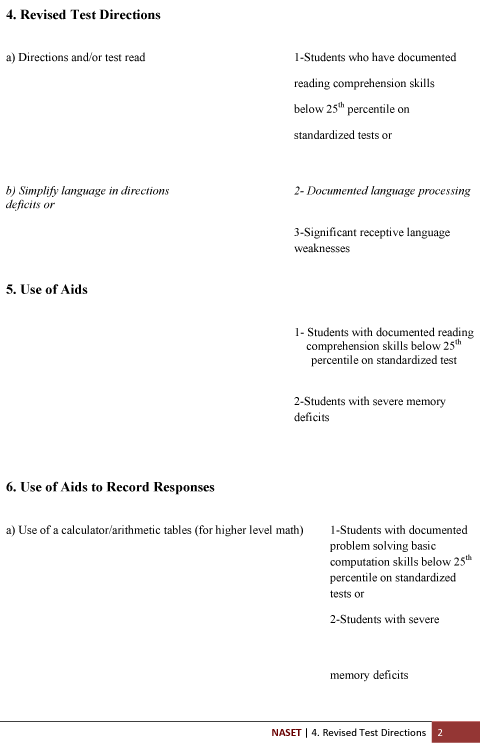

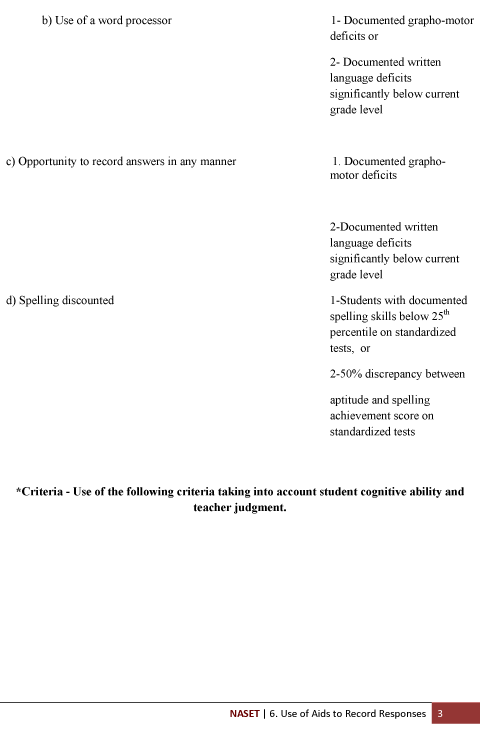
Forms
